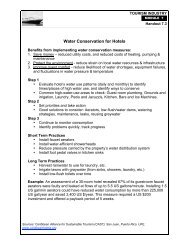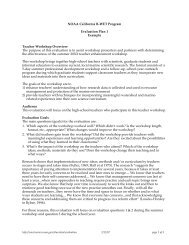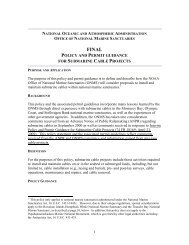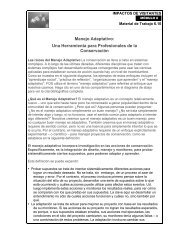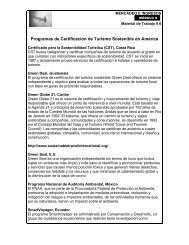The Hawaiian spinner dolphin, Stenella longirostris: Effects of tourism.
The Hawaiian spinner dolphin, Stenella longirostris: Effects of tourism.
The Hawaiian spinner dolphin, Stenella longirostris: Effects of tourism.
You also want an ePaper? Increase the reach of your titles
YUMPU automatically turns print PDFs into web optimized ePapers that Google loves.
12<br />
behavior. Constantine (1995) also found that responses to different tour boat approach<br />
strategies varied by species.<br />
Aggressive and sexual behaviors performed by <strong>dolphin</strong>s and directed towards<br />
swimmers have been documented in both captive (Samuels and Spradlin 1994, Froh<strong>of</strong>f<br />
and Packard 1995) and wild <strong>dolphin</strong>s (Lockyer 1990, Bloom 1991, Shane 1993,<br />
Dudzinski et al. 1995, Santos 1995, Seideman 1997). Defecation, the creation <strong>of</strong><br />
bubble trains, jaw clapping, and head wagging in proximity <strong>of</strong> swimmers have all been<br />
interpreted as aggressive displays made by captive marine mammals. Interpretation <strong>of</strong><br />
"annoyance" which leads to direct aggression, is difficult to measure, with differences<br />
occurring even among researchers with vast experience (Heimlich-Boran and Heimlich-<br />
Boran 1995). This point is exemplified by interpretations <strong>of</strong> a video tape <strong>of</strong> a<br />
Hawai’ian pilot whale interacting with a swimmer, where aggressive playfulness and<br />
sexual intentions were interpreted by different viewers as the intent <strong>of</strong> the male whale<br />
as it dragged the female human underwater (Shane 1995).<br />
In a study <strong>of</strong> captive "swim with the <strong>dolphin</strong>" programs in the United States,<br />
Samuels and Spradlin (1994) found that high risk activities (such as aggressive or<br />
sexual behaviors performed by <strong>dolphin</strong>s and directed towards swimmers) comprised as<br />
much as 61% <strong>of</strong> <strong>dolphin</strong>-swimmer social time during non-controlled swims.<br />
Submissive behavior displayed by <strong>dolphin</strong>s during <strong>dolphin</strong>-swimmer social time was<br />
also considered to be a high risk activity because in the wild, this type <strong>of</strong> behavior is<br />
commonly elicited by aggression, and therefore, a part <strong>of</strong> agonistic interactions<br />
(Samuels and Spradlin 1994). Aggressive behaviors <strong>of</strong> captive marine mammals have<br />
resulted in injury and, in one instance, death when a trainer was pinned to the bottom by





